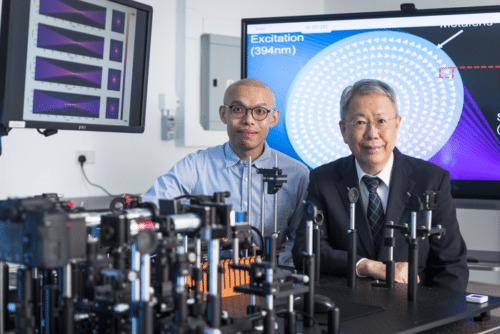An innovative Vacuum Ultra-Violet (VUV) meta-lens that can create and concentrate the VUV light has been successfully developed by a research team co-led by City University of Hong Kong (CityU).

In the production of semiconductors, photochemistry, and materials science, VUV is employed. Nanolithography, material processing, sophisticated manufacturing, and other industrial fields all heavily rely on the focused VUV light source.
However, working with it has proved expensive. The oxygen in air greatly absorbs VUV with wavelengths between 100 and 200 nanometers (nm), necessitating the use of a vacuum chamber or other specialised environment for its utilisation. VUV light is typically produced and focused using very large, expensive systems that utilise unique nonlinear crystals.
In addition, due to their significant absorption in this region, almost all glass types utilised for traditional lenses are inappropriate for the VUV. There are practical restrictions on the production and design of tiny lenses due to the relative fragility of the few VUV-transmittable materials currently employed for lenses.
Professor Tsai Din-ping, Chair Professor of the Department of Electrical Engineering (EE), and Dr. Chen Mu-Ku, Research Assistant Professor of EE, have created several 150nm-long triangle-shaped zinc oxide nano-antennas to create a VUV metalens in order to overcome the aforementioned restrictions.
“We have developed a meta-lens with intricate nano-structures on zinc oxide thin film. It is capable of focusing VUV light. This metalens provides a compact method for nonlinear VUV generation and focusing of the generated light,” said Professor Tsai, one of the corresponding authors of the paper recently published in the academic journal Science Advances.
The new VUV metalens, which have a diameter of 45 micrometres (m), focus the VUV light onto a small spot with a diameter of less than 2 micrometres by converting UV light with a wavelength of 394 nanometers into VUV light with a wavelength of 197 nanometers. Research at Rice University showed that a focused laser spot might have a 21-fold increase in power density.
“Our VUV meta-lens is compact, lightweight, effective, and can be mass produced by semiconductor electronics fabrication process. This novel and disruptive meta-device could revolutionise the conventional VUV optics technology and its market,” Professor Tsai said.








